
Alizée Gazeau
Häutung
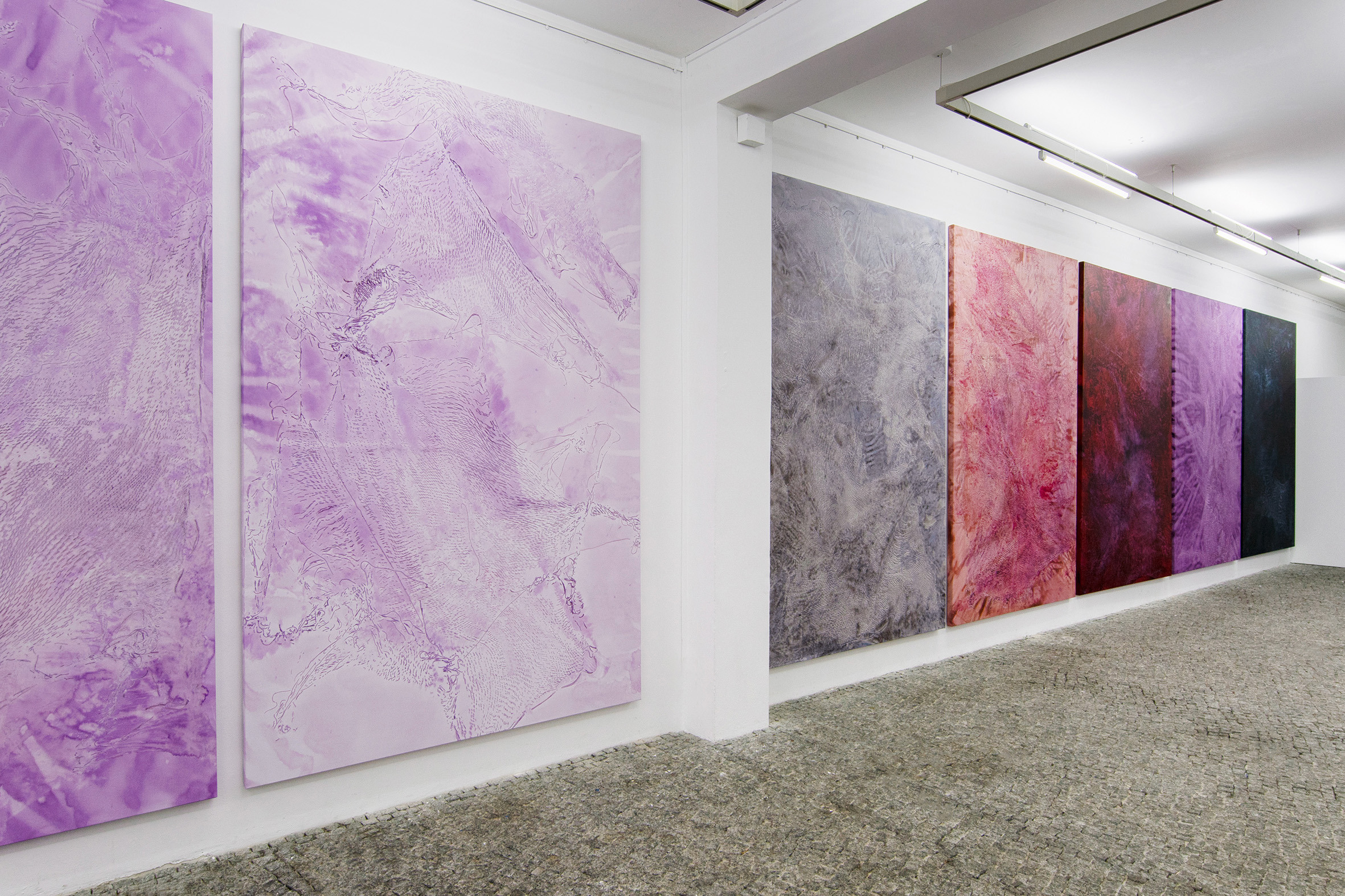
exhibition view
Advertisement
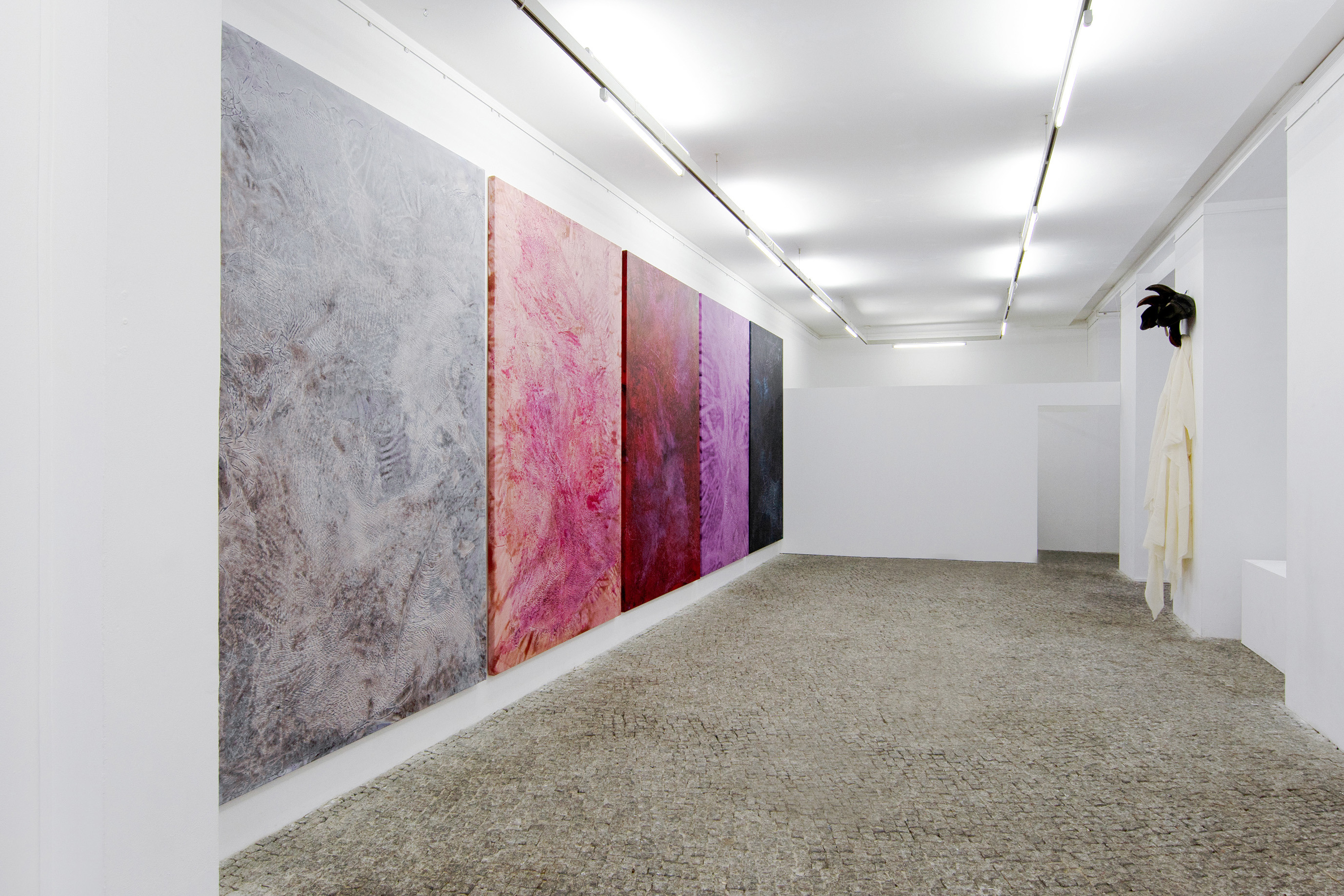
exhibition view

Alizée Gazeau, Untitled (Phaéthon), 2021, horse saddle, cotton muslin, variable dimensions

Alizée Gazeau, H_22_1, 2022, acrylic and ink on canvas, 300x190 cm
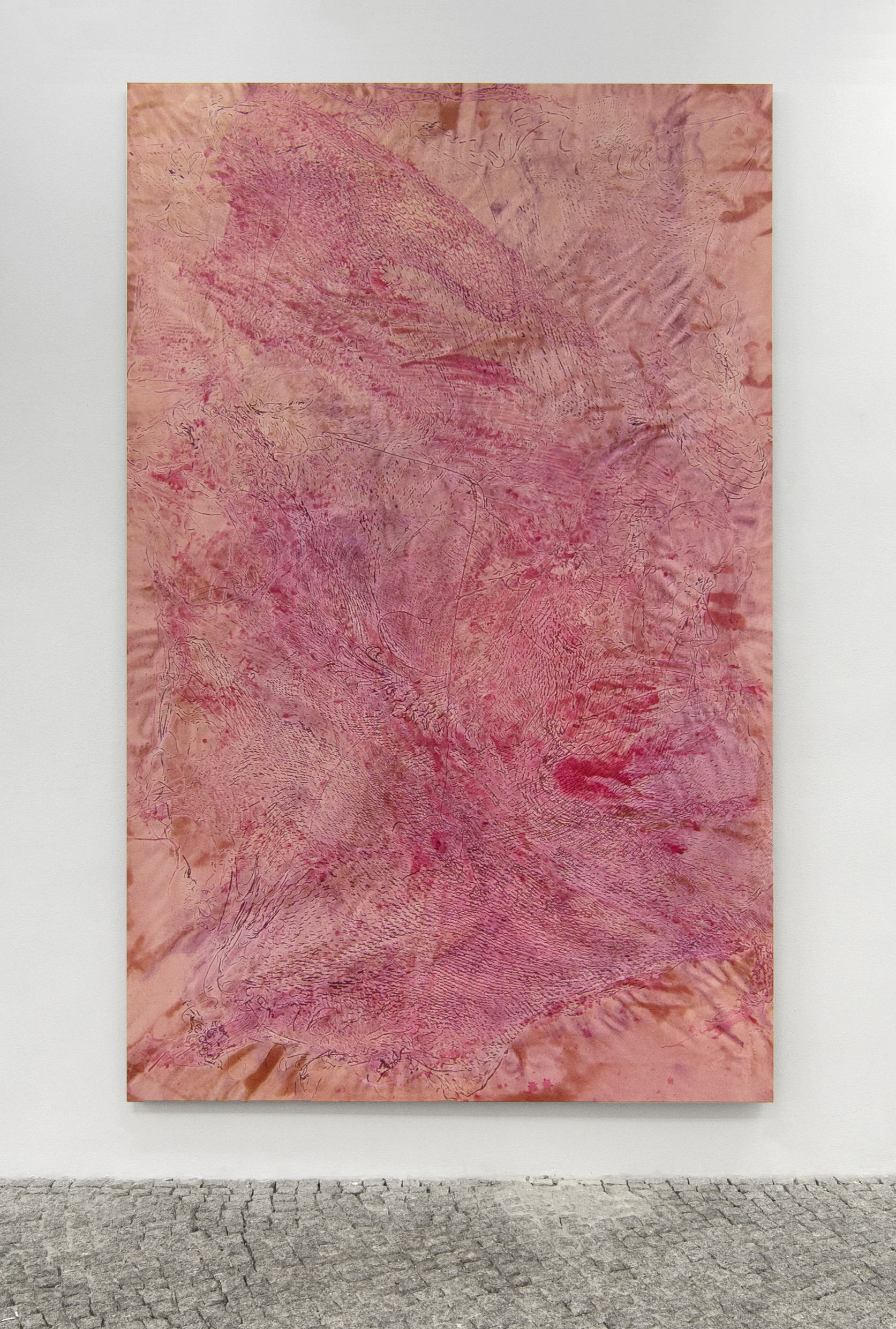
Alizée Gazeau, H_22_6, 2022, acrylic and ink on canvas, 300x190 cm

Alizée Gazeau, H_22_7, 2022, acrylic and ink on canvas, 300x190 cm
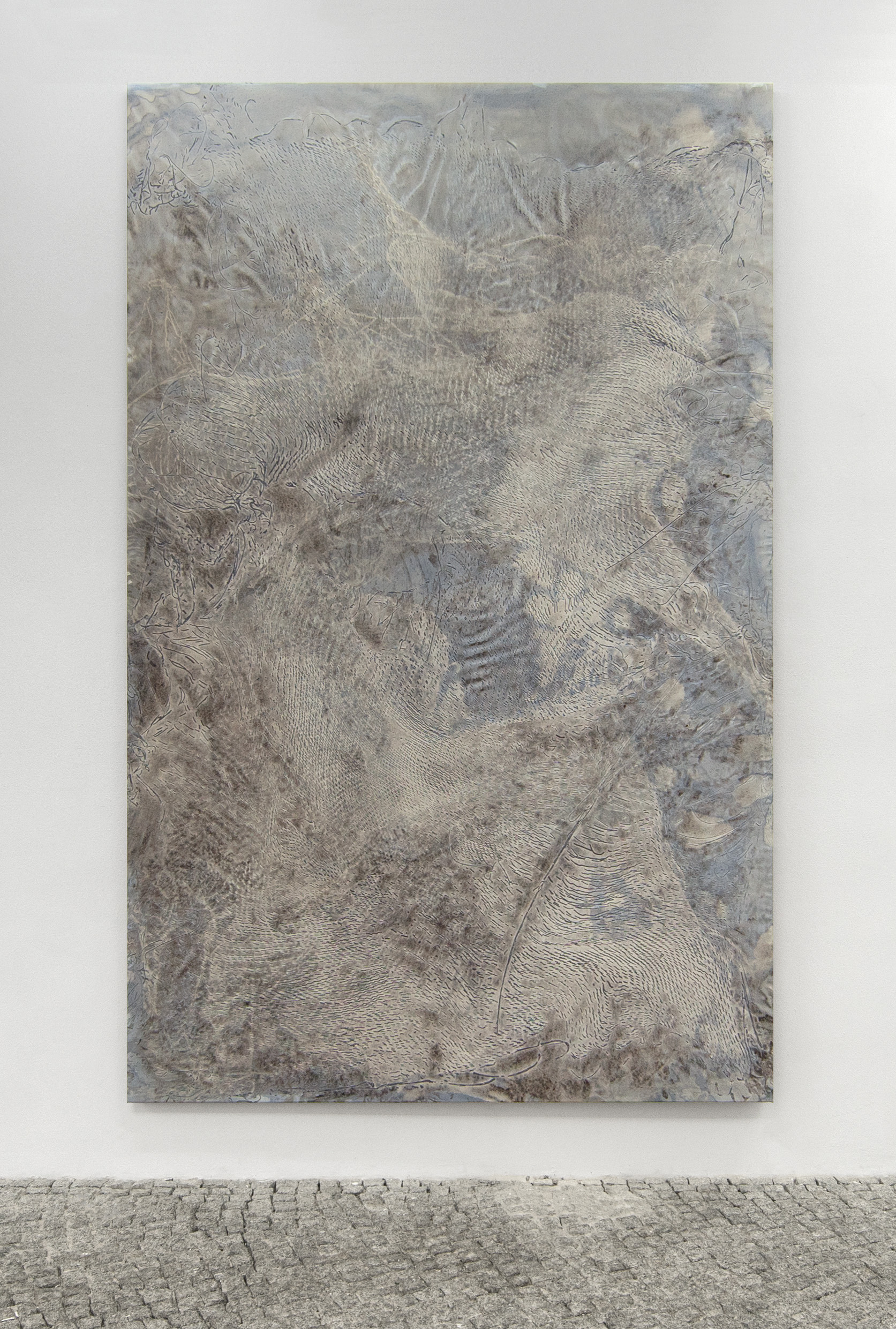
Alizée Gazeau, H_22_8, 2022, acrylic and ink on canvas, 300x190 cm
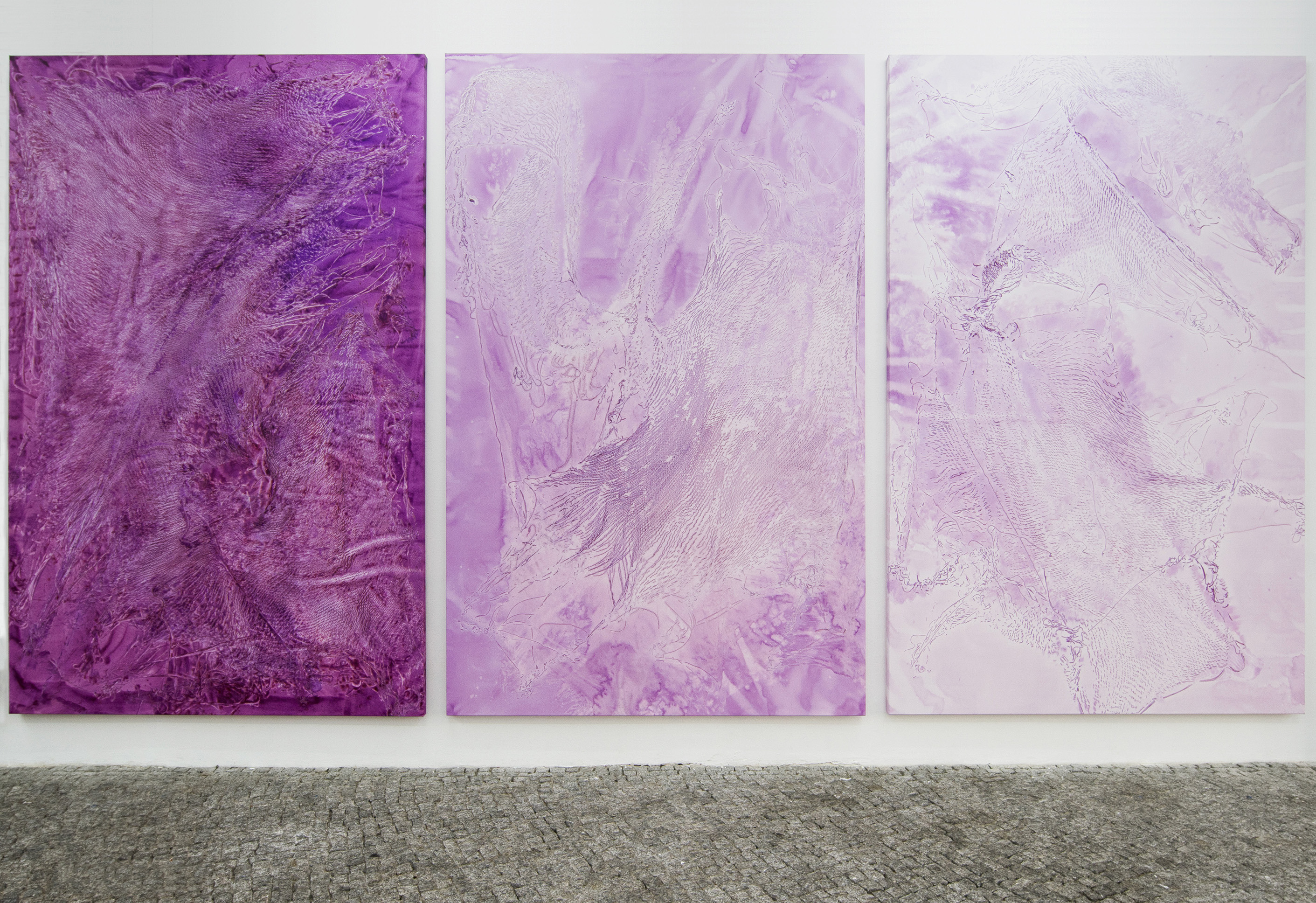
Alizée Gazeau, H_22_4, H_22_1, H_22_2, 2022, acrylic and ink on canvas, 300x190 cm

Alizée Gazeau, Untitled (Phaéthon), detail, 2021, horse saddle, cotton muslin, variable dimensions
An End to a Sentence, a conversation between Alizée Gazeau and Lisa Deml
Lisa Deml: The impression that settled on my mind when I first came to see this series of painting in your studio was that of maturity. To me, these paintings are a very clear and condensed expression of different lines of thought and experimentation that you have been following for several years. They seem to have grown through practice and now coincide with your first solo exhibition. How is this exhibition situated in your artistic development, what does it mean to mark this point in time?
Alizée Gazeau: I consider this exhibition as an opportunity to end a first sentence. I invoke the notion of a sentence, but you could also say it marks the end of a first journey. My work is concerned with process itself and I have the feeling that I could develop the same idea further indefinitely. In this sense, the exhibition at gr_und is also a challenge for me to put an end to this process. Even though I would never say that this process is finished, I have reached a point when I can let it settle down and let go. When the work enters into an exhibition space, it does not belong to me anymore, it is not about me anymore—the work has to speak for itself, as Louise Bourgeois would insist. She says that an artwork has nothing to do with the artist; it has to stand for itself. I find this credo helpful to navigate the tension between the intimacy inherent in artworks and the extrovert nature of exhibitions.
Lisa Deml: This is not only your first solo exhibition but also the first time that you work in painting and to this scale. How did you arrive at this discipline and format of 200x300cm? Would you say that it is the result of a measure of trust and confidence you have gained in the process?
Alizée Gazeau: I felt the need to not only engage the hand and the eye in the work process but to involve the whole body. It is a very physical process as I work on the floor and pull and place the hammock and the net on the canvas. And it is not only a physical experience for me in the production process but also for the viewer in front of the paintings. I wanted the paintings to be bigger than us, so that they create an immersive sensation that exceeds the human body.
Lisa Deml: Given the expansive format of these paintings, how do you approach the canvas to begin with?
Alizée Gazeau: The paintings make me as much as I make them. It is a conversation between me and the various materials involved in the process, the canvas, the net, the hammock, colour and water. With these components, I create an environment, a framework within which the painting can emerge. Of course, the work process is different with every painting, there are different layers and rhythms at play each time. But what characterises my process is that I organise a situation on canvas and then leave the studio while the painting takes form. I return to it when everything has dried and I can remove the hammock and net to discover how they have impressed themselves on the surface. I very much enjoy this moment of revelation because it is often surprising. It is almost like a laboratory where I arrange the experimental setup and observe how it develops on its own. It is a delicate balance between controlling and letting go. While the first part of the work process is determined by my decisions and choices, the second part is beyond my command. So, even though this series of works are undeniably paintings, I would not call myself a painter.
Lisa Deml: As you mentioned the idea of the skin, this takes us to the title of the exhibition—Häutung. This notion of skinning seems to resonate on so many levels with your artistic practice, with the paintings themselves and their aesthetic impression, as well as with your work process and development as an artist. How do you relate the idea of Häutung to your practice?
As my work is concerned with the process itself, it is strongly connected to the concept of metamorphosis. For me, the process of printing relates to a continuous struggle to come to terms with the perpetual evolution and movement in which we are all implicated. Printing or imprinting are ancestral practices, ways to experience or own existence, for instance through handprints in stone or fossils. I had already produced prints with different found objects from the environment when I found the fishing net. It reminded me of fish skin itself—an interesting paradox, that the net mimics that which it is supposed to catch. The hammock is also a curious object that is allowing us to lie down and rest in nature, precisely by protecting us from the natural ground. Eventually, I moved away from natural elements towards tools that humans produced in order to enter into a conversation with what is called “nature”. In many ways, this is very similar to artistic practice, and to my artistic practice in particular. Both the hammock and the net are permeable and ambivalent between controlling or letting go. And once I have printed them on canvas, they become something else altogether and take on a second life.
(…)
Lisa Deml




